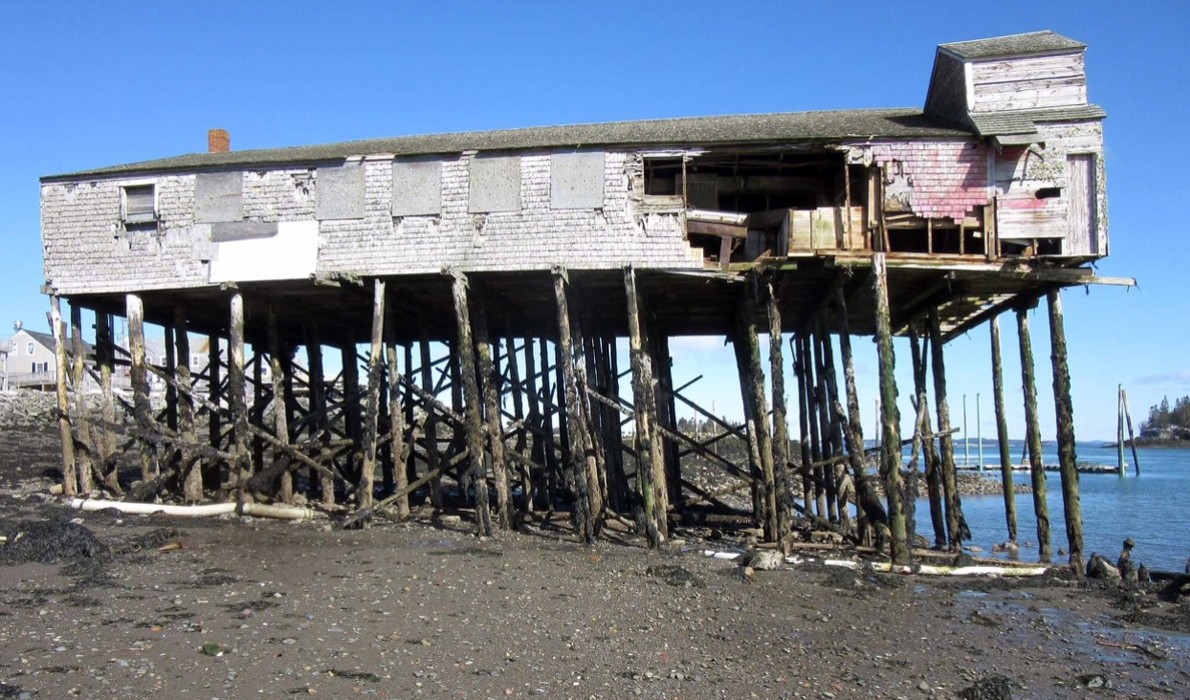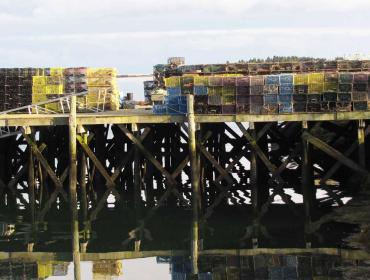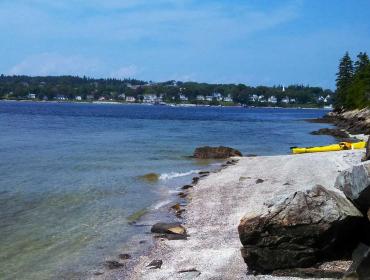Posted April 25, 2017
Last modified May 17, 2017
Some things just can’t be replaced, such as the historic brining shed—an integral element in Lubec’s once booming smoked herring business.
The now empty and fragile structure was used as part of the process at McCurdy’s Smokehouse, which is the last standing herring smokehouse in the country.
Rachel Rubeor, president of Lubec Landmarks Inc., which wants to preserve the shed, said the brining building was the place where herring was first removed from the fishing boats and uploaded to the shed via a sluice.
“Here the herrings were ‘bruised’ or ‘pickled’ as the first step toward the final product, herring for market,” said Rubeor.
The preservation and restoration process would result in a living museum with interactive exhibits, she said, as well as serve as a tribute to the rich maritime history of this area.
“We have much to be proud of in this area as we provided nutritious, inexpensive food to hungry Americans during the Depression and through the world wars,” Rubeor said.
The brining shed juts out into the channel between Lubec and Campobello Island in Canada and is vulnerable to winds, tides and rough, stormy weather.
The March blizzard took a toll on the pilings and structure. As a result, the organization is now trying to raise $125,000 in a GoFundMe page online to rescue and rehabilitate the building.
Back in the 1950s, Lubec’s waterfront had a number of smokehouses, sardine canneries, lumber and coal businesses, all situated on a series of wharves.
Food was smoked to preserve it and the process was passed down from one generation to another, much like many of the aspects of fishing.
Rubeor said visitor interest has already been stimulated by the re-opening of the nearby McCurdy’s Smokehouse, where the herring were impaled and smoked.
McCurdy’s Smokehouse was open for business until 1990.
About 1,000 visitors come to the smokehouse each year from around the country and overseas, Rubeor said.
She quoted the remarks of one recent visitor:
“The tour guide was excellent explaining the fascinating process of preparing smoked herring from delivery of the live fish to the boxing and shipping of the finished product. This is a nearly lost part of the Maine seafood industry history that is being kept alive by this tiny museum.”
Rubeor said the $125,000 would be used to remove the building from its pilings and then to build new and stronger pilings closer to shore.
The shed would be cleaned and repaired, including the walls, roof and the sluice.
The building would then be re-positioned on its pilings “and take its rightful position within the McCurdy’s Smokehouse complex,” Rubeor said.
The smoked herring industry once employed thousands of men, women and children in Maine.
“Many of our visitors are the children and grandchildren of workers in the smokehouse,” Rubeor said.
The Atlantic herring soaked in brine for a week before being impaled through the gills with long wooden sticks and then hung.
After seven to eight weeks, the herring were taken down, decapitated, skinned, gutted, deboned, split in half and packed into wooden boxes to be shipped all over the world.
The herring business diminished in post-World War II when Americans had access to refrigeration and fresh food brought by trucks on the country’s new interstates.
In 1996, the decaying McCurdy’s Smokehouse was restored by Lubec Landmarks.



